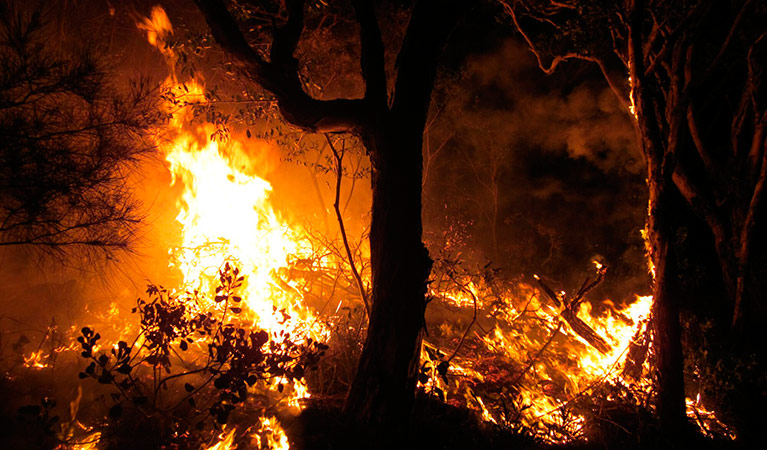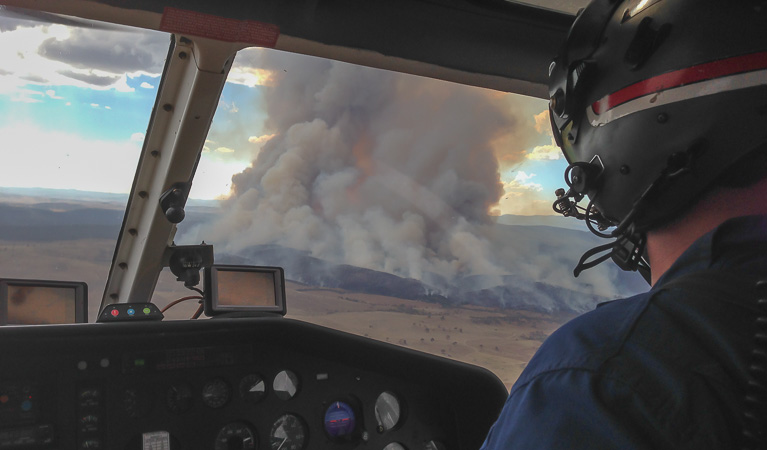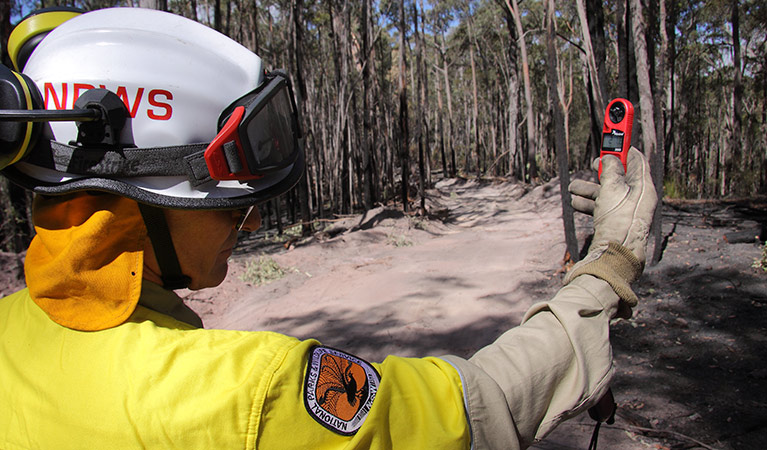Understanding bushfires
Fire is as much a part of the Australian landscape as the biodiversity that has adapted to it over millions of years. Bushfires have many beneficial ecological effects, but these effects are complex and may be positive or negative. NPWS relies on a foundation of fire research carried out by OEH scientists and others to implement fire management that is consistent with biodiversity conservation.
Read more about Understanding bushfires
Fire creates open space, returns nutrients to the soil, clears dead vegetation, breaks hard seed coats, and temporarily removes competitively dominant species so others can gain a foothold, bringing new plant growth. A mix of fire regimes promotes plant diversity and maintains the range of habitats needed by many native Australian animals. For all of these reasons, fire is an important element affecting biodiversity.
However, if bushfires shift beyond the threshold of what plants and animals can tolerate, species can be lost. To carry out fire management practices that are ecologically-sustainable and consistent with biodiversity conservation, NPWS draws on a significant body of fire research. This is done by scientists in the Office of Environment and Heritage and a range of universities. OEH scientists study the impacts of fire on biodiversity and species conservation, on bushfire risk, and the interactions with climate change. This research into fire ecology is invaluable for the long-term understanding and protection of our natural environment.



